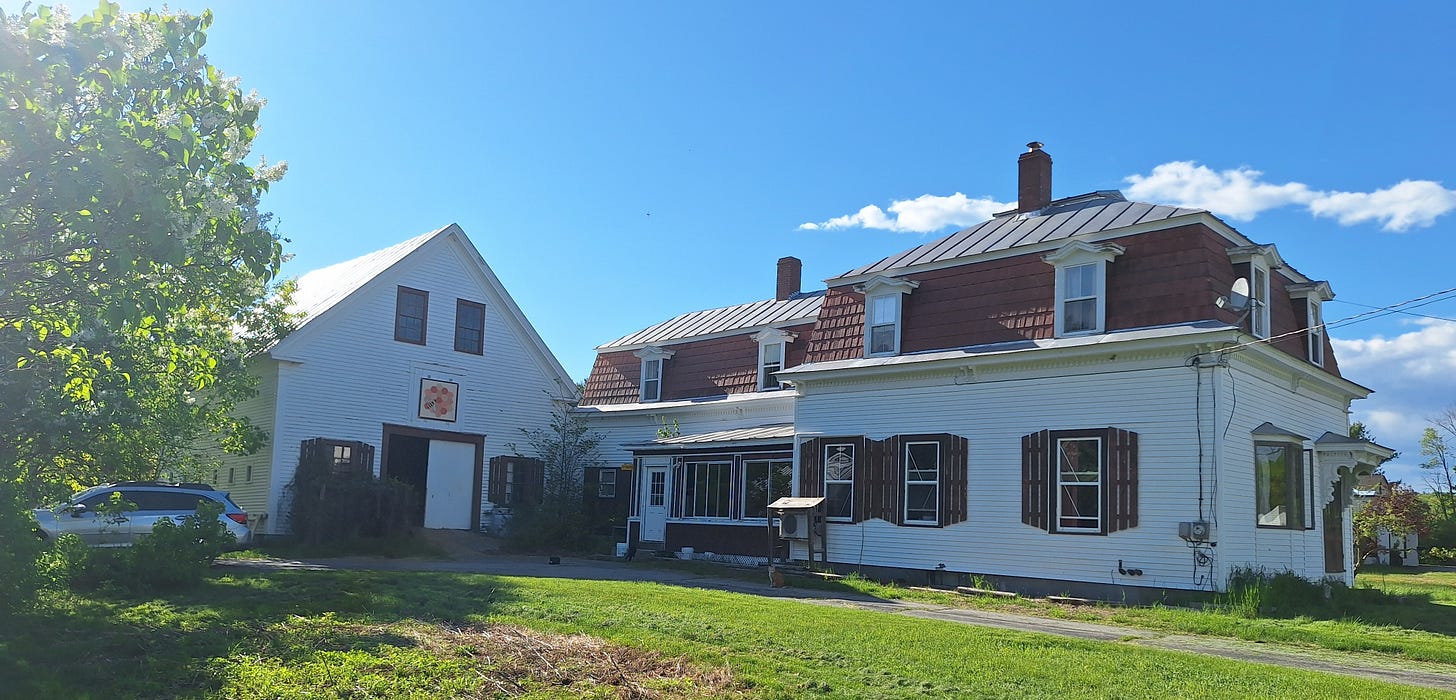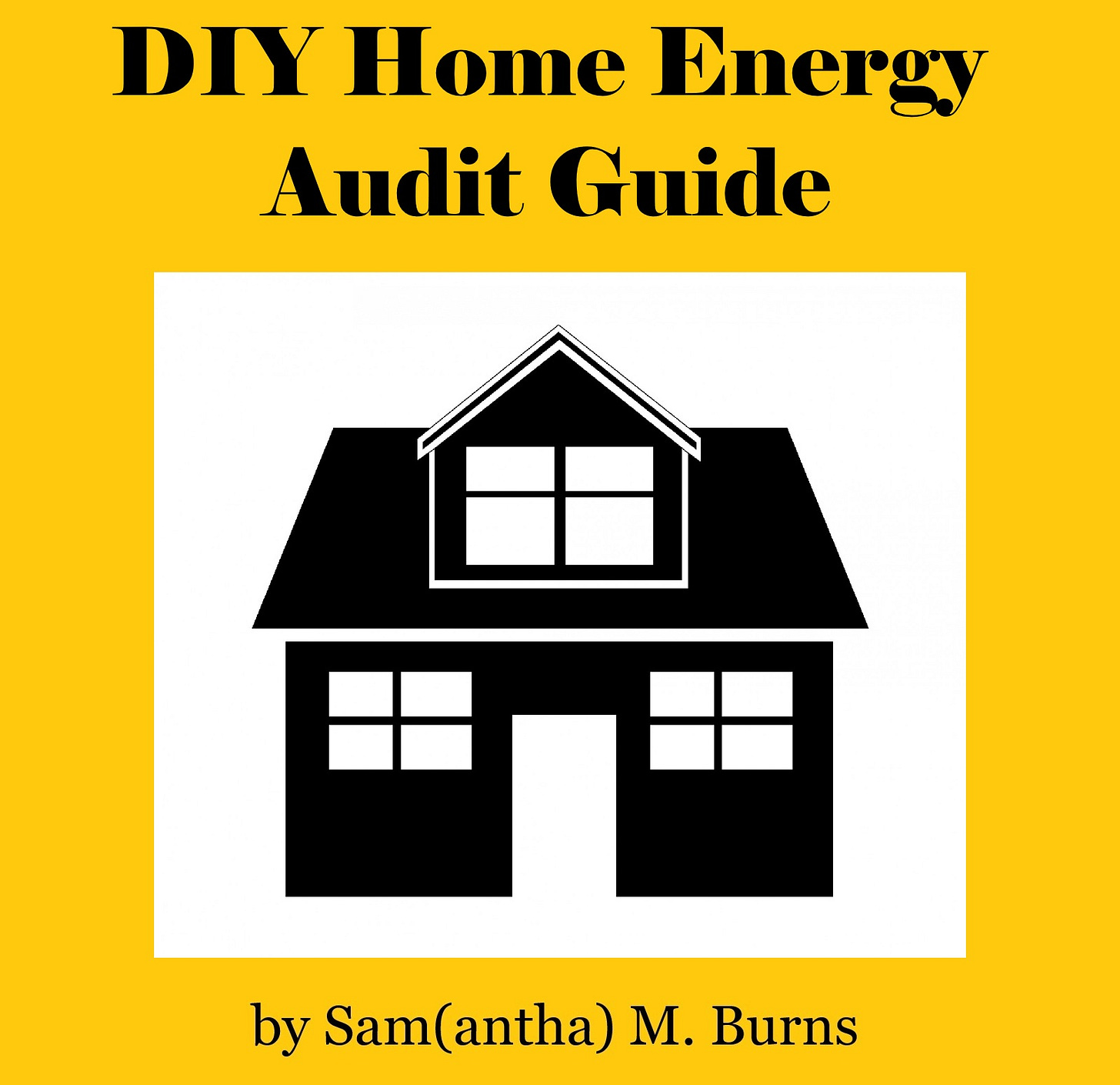Welcome to the Sustainable 99! My name is Sam and I'm here to prove that meaningful environmental change doesn't require privilege—just creativity and small, imperfect actions. In this newsletter, you'll find practical, budget-friendly tips that actually save money while reducing your ecological footprint. New here? Check out my About page or just dive right in!
WHAT’S IN THIS POST
Establishing My Home Energy Baseline
The Reality of Rural Homeownership
A DIY Home Energy Audit Guide
Baseline Numbers: Transparency in Action
What These Numbers Tell Me
Next Steps: From Audit to Action
Join Me On This Journey
Establishing My Home Energy Baseline
It took nearly 10 years to buy my own home. As someone determined to have acreage and the opportunity to farm, I found a path forward as a beginning farmer through USDA programs, accessing funds designated specifically for women in agriculture. When the time finally came to go house-shopping, I took what I could get—and I'm grateful I did.
That turned out to be a rambling six-bedroom house built in 1901, sitting on 53 scrappy but promising acres. Mercifully, this old house has been exceptionally well-maintained, and I thank my lucky stars every day for the stability that homeownership has brought into my life.
Standing solid with a straight roof and dry basement (even spray-foamed!), she was essentially a turn-key investment. In the seven years I've been here, I've done next to nothing in the way of improvements. She simply didn't need them.
The only catch? Keeping all her century-old systems running efficiently.
The Reality of Rural Homeownership
Aside from having our own septic system, all of our utilities are fairly mainstream. While major upgrades are currently beyond my budget, I'm a firm believer that there's always room for improvement—especially when every dollar counts as a freelancer funding conservation efforts.
With sustainability goals in mind and a tight budget to maintain, I've decided to undertake a comprehensive energy audit of my home. This will give me a baseline to work from and help identify where I'm hemorrhaging money each month.
What's more, understanding my home's energy patterns will help me prioritize the most impactful improvements when funds become available. Sometimes the smallest changes yield the biggest results.
A DIY Home Energy Audit Guide
Having never conducted a home energy audit myself, I decided to create a comprehensive DIY Home Energy Audit Guide—both for my own use and to share with you. This resource walks through everything from gathering utility bills to conducting a thorough walk-through of your home's energy systems.
➡️That resource is available for free to paid subscribers here.
➡️Free and non-subscribers can access the download for just 99¢ here.
According to best practices outlined in the guide, it's ideal to conduct the physical audit when there's a 20+ degree temperature difference between inside and outside temperatures. This allows you to better detect air leaks and thermal inefficiencies using simple tools like incense sticks or infrared thermometers.
➡️I'm penciling this task into my planner for late October, when Maine's crisp fall weather will provide that perfect temperature differential.
Baseline Numbers: Transparency in Action
For now, I've gathered all my utility bills to establish baseline usage patterns. In the spirit of transparency that drives this newsletter, I'm sharing my real numbers with you:
RUNAMUK UTILITIES SNAPSHOT:
Water: Town water supply — $300 quarterly ($100/month average)
Electric: Grid-connected — averaging 650 kWh/month
Heating: #2 fuel oil — 1,350 gallons annually, with 1,250 gallons consumed between September and May
What These Numbers Tell Me
Looking at these figures, a few patterns emerge immediately:
Heating dominates my energy costs. With over 90% of my annual oil consumption happening during our 8-month heating season, this is clearly where the biggest opportunities for savings lie.
Electric usage is moderate but consistent. At 650 kWh monthly, I'm slightly below the national average for a home this size. However, this number includes powering electric fences to contain our sheep on pasture, plus the reality of working with century-old electrical systems that limit upgrade options. Given these constraints and my current budget, significant reductions may not be realistic—but understanding usage patterns will still help identify any obvious inefficiencies.
Water costs are fixed but reasonable. While I can't control the quarterly fee structure, monitoring usage will help me understand if there are any inefficiencies in our system.
Next Steps: From Audit to Action
Once I complete the physical audit this fall, I'll be able to cross-reference these baseline numbers with actual problem areas in the house. The goal isn't just to identify issues, but to prioritize solutions based on cost-effectiveness and environmental impact.
The challenge? This house is already well-maintained. Windows and doors have proper caulking and weatherstripping, the basement is spray-foamed, and the attic is properly insulated. Major upgrades like programmable thermostats or switching to alternative energy sources are currently beyond my budget.
This means I'll need to get creative with behavioral changes and resourceful solutions.
Case in point: I just built myself a clothesline this week by cannibalizing an old seedling rack I was no longer using. It cost me nothing but a little time and ingenuity, yet it should help reduce my electric usage by eliminating dryer cycles.
I'll be documenting this entire process and sharing the results—successes and failures alike—in upcoming newsletters. Because real sustainability happens through real action, not perfect plans.
Join Me on This Journey
Whether you're in a century-old farmhouse like mine or a modern apartment, understanding your home's energy patterns is the first step toward meaningful change. Every home has opportunities for improvement, and most of them don't require major investments.
Have you conducted your own home energy audit? I'd love to hear about your discoveries and solutions. Reply and let me know what worked (or didn't work) for you.
Until next time, keep making progress—one step at a time.
P.S. Don't forget to grab your copy of the DIY Home Energy Audit Guide. Whether you're a homeowner or renter, there are strategies in there that can help you reduce both your environmental footprint and your monthly bills.
➡️If you found this post useful, please consider restacking to support my work.




Help! I'm having trouble too. I added the product to my cart, but when I try to View Cart it takes me to Page Not Found.
Hi Sam! This is great. It both gives me hope (of buying again someday) and some practical advice.
I went to the guide and paid to get the download. It took me to a “page not available” message.
Usually - it’s user error with me - but thought I’d ask here if you might help?
Thanks!